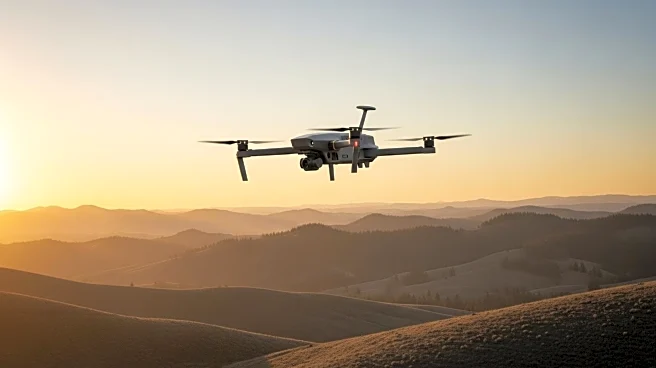What's Happening?
Biologists near the California-Oregon border are employing drones equipped with loudspeakers to deter wolves from attacking cattle. The drones play loud noises, including music from AC/DC and movie clips featuring Scarlett Johansson, to scare the wolves away. This innovative approach is part of a broader effort by the USDA to use non-lethal methods to protect livestock from predators. The initiative follows the reintroduction and subsequent population growth of gray wolves in the U.S. West, which has led to increased conflicts with ranchers. The USDA's technique involves monitoring wolves with thermal imaging cameras at night and using drones to interrupt wolf hunts.
Why It's Important?
The use of drones represents a significant advancement in non-lethal wildlife management, potentially reducing the need for lethal measures against wolves. This approach could foster coexistence between ranchers and wolves, minimizing livestock losses and promoting biodiversity. However, the technology is costly and requires professional training, which may limit its accessibility for many ranchers. If successful, this method could lead to broader adoption of drones in wildlife management, offering a humane alternative to traditional predator control methods.
What's Next?
The USDA continues to research wolf responses to drones, with patrols extending to new areas like the Sierra Valley. The long-term effectiveness of drones remains uncertain, as wolves may become accustomed to the noise. Ranchers are hopeful but cautious, with some expressing concerns about the sustainability of this method. Future developments may include cost reductions and improved drone technology, making it more practical for widespread use.
Beyond the Headlines
The ethical implications of using technology to manage wildlife are significant, as it challenges traditional views on predator control. This approach aligns with growing environmental advocacy for humane wildlife management practices. The success of this initiative could influence policy decisions regarding predator management and livestock protection.














